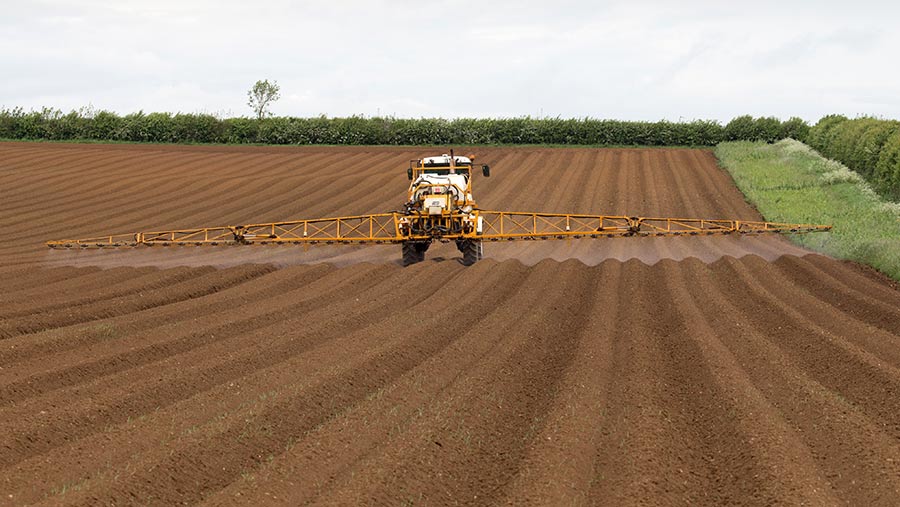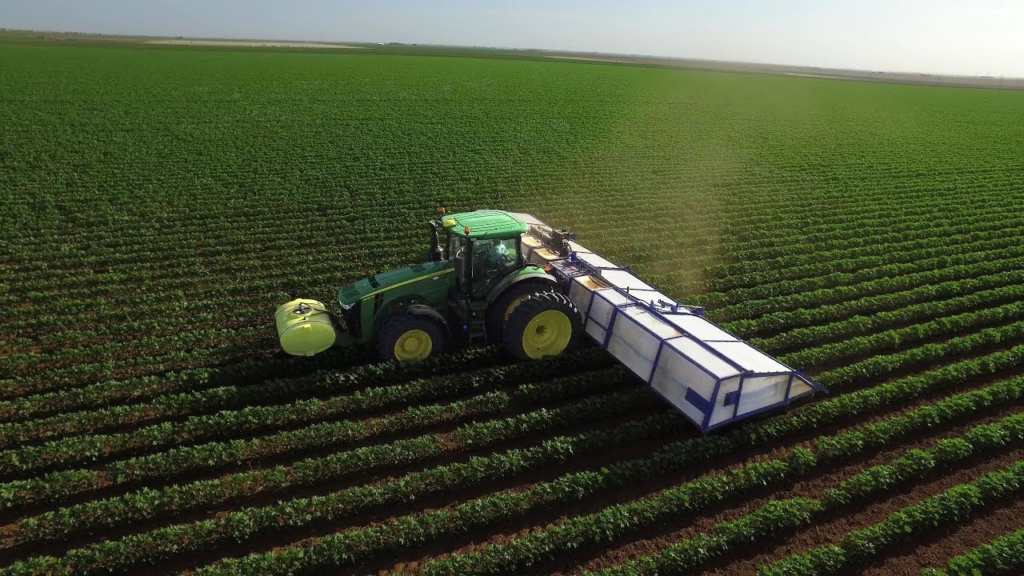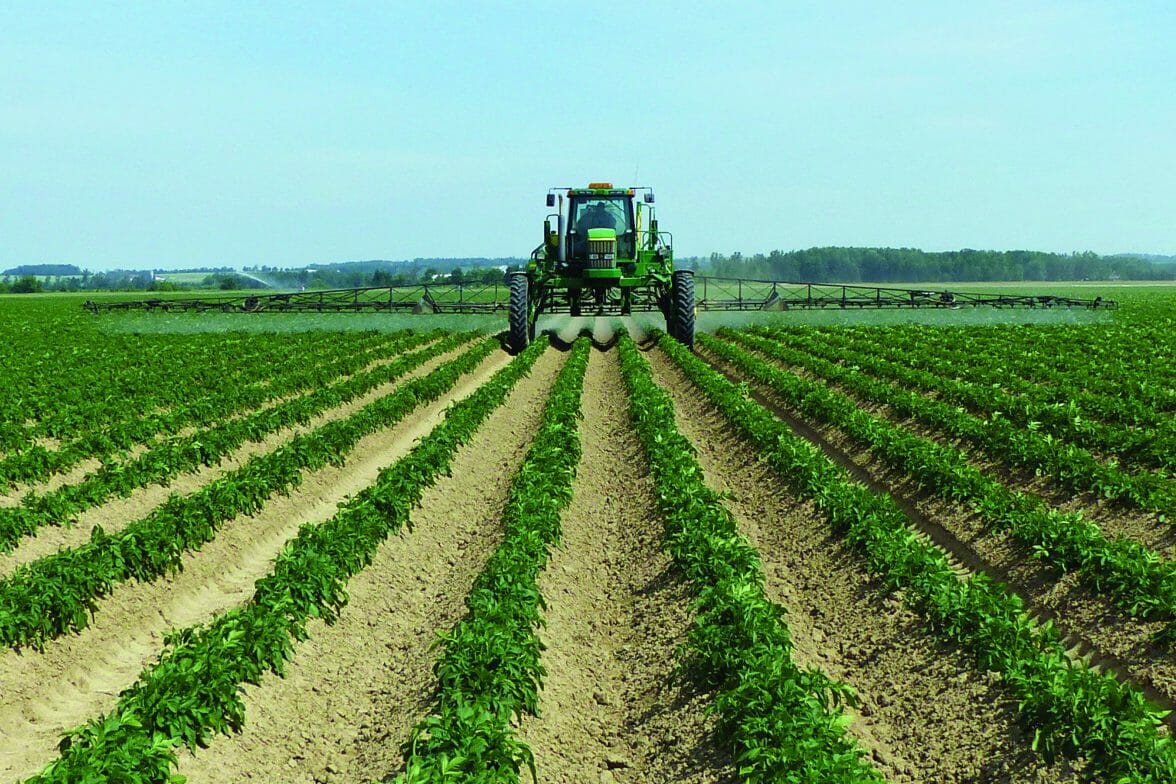The timing basics needed for successful weed control in potatoes can be thought of in three manners:
- There are three “windows of opportunity” for herbicide application timing in potatoes.
- Within each timing, weed emergence status comes into play, and if emerged, weed size.
- Last but not least, coordinating tilling and herbicide application timing is critical.
Herbicide application timings:
- Pre-plant, before potato planting, also known as “burndown” herbicides
- Pre-emergence (PRE) after planting but before potato emergence
- Post-emergence (POST) after potatoes emerge.

Within each timing, weeds might or might not have emerged so activity of the herbicide — soil and/or foliar — comes into play. Timing of drag-off, hilling and cultivation must be carefully coordinated with timing of herbicide application to complement rather than disrupt.
Some herbicides only have soil activity — the ability to affect weeds by preventing germination and/or emergence. An example is Eptam (EPTC), a herbicide that interferes with germination and seedling growth below ground. Other herbicides, such as Select (clethodim), have only foliar activity. There are also herbicides that have both soil and foliar activity, such as metribuzin.
Pre-plant herbicides labeled for burndown at the pre-plant timing have foliar activity and include Aim (carfentrazone-ethyl), glyphosate, paraquat and Sequence, a formulated pre-mix of glyphosate and s-metolachlor (has only soil activity).
Mechanical tillage is used to prepare the ground for planting and also can control emerged weeds including volunteer grains. However, dense populations might not be controlled with tillage only, or perhaps the field was fall-bedded. Another scenario for using burndown herbicides could be excess rainfall preventing timely pre-plant tillage. Applying one or more of these herbicides to actively growing weeds before spring tillage can provide that control. These herbicides can also be used for burndown after planting but must be applied before potato emergence because they can kill already emerged potatoes and reduce yields.
The PRE. PRE herbicides with soil activity are shown in the first column of Table 1. They must be applied before potato emergence and incorporated into the soil by sprinkler irrigation or rainfall. For some, mechanical incorporation is labeled but usually as a last resort if the first two are not an option. Three of these herbicides — Chateau, Linex/Lorox and sulfentrazone — also have foliar activity and can control some emerged weeds. However, although safe to potatoes that have not yet emerged, these herbicides can kill emerged potatoes.
Herbicides with soil activity only, but safe to emerged potatoes are shown in the second column of Table 1 and can be applied PRE or POST. One of the advantages for using these soil active-only herbicides POST is to extend control of weeds which have not yet emerged further into the season.
Matrix and metribuzin are versatile in that they have both soil and foliar activity and can be applied PRE and/or POST (Table 1, third column). Follow the labels for recommended adjuvants at the POST timing.
Size of emerged weeds. In general, Matrix and metribuzin applied to emerged weeds can provide good, season-long control. Poor control can occur, however, if the weeds are greater than 2 inches tall at application time.
The POST. Grass control-only herbicides labeled for use in potatoes are Post and Select (Table 1, fourth column). Size of grasses at application time is also critical but depending upon species, might not necessarily need to be less than 2 inches to be effective. Read the label for more specific information.
Tank-mix, and/or if labeled, sequentially apply herbicides (PRE+POST or POST+POST) for weed control in potatoes. Do not only apply one herbicide or apply herbicides with only one site of action (SOA) in the growing season, even in the rare instance of a field with only one weed species. Also referred to as target site or mechanism of action, SOA is the specific protein or biochemical site in a plant to which the active ingredient in a herbicide binds/interacts. If herbicides with only one SOA are used, then the one-in-a-million weed plant naturally tolerant to that SOA lives, reproduces and can begin to dominate the population because the susceptible plants die.
Coordination of tillage and herbicide application, hilling and herbicides both PRE to potatoes. Research at the University of Idaho has shown that the PRE-only herbicides are most effective if applied right after preemergence hilling and then sprinkler/rain-incorporated. As the hilling operation throws soil from the furrow up onto the row to create the hill, weeds are “taken out” or covered by the soil. Emerged weeds greater than 2 inches tall can recover. The soil-active herbicides applied to the clean beds created by preemergence hilling can prevent any more weeds from emerging. (NOTE: Equipment such as a Dammer Diker combine hilling with creating pits in the furrow that slow irrigation water infiltration and increase irrigation efficiency.)

Once the PRE soil-active herbicides are applied, no further tillage operation should take place. Otherwise, the herbicide layer in the soil is interrupted when untreated soil and perhaps weed seed is brought to the surface. All herbicides labeled for weed control during the growing season can be used for this PRE hilling-herbicide combination.
Drag-off before potato emergence + hilling and herbicide application POST after potato emergence. Some growers use a harrow or other implements to drag-off before potato emergence. The harrow levels the field and can take out emerged weeds. Hilling takes place after potato emergence followed by herbicide application and, where appropriate, sprinkler/rain incorporation.
The advantage to this post emergence tillage-herbicide application combination is that the POST herbicide application could allow weed control further into the season than when the herbicides are applied PRE. The disadvantage is that weeds might emerge before potato emergence and be too large to be effectively controlled by hilling after potato emergence. In that case, a foliar active herbicide must be included in the tank mix, however, weeds may also be too large for those herbicides to work effectively.
Application of a foliar active herbicide before potato emergence when weeds are less than 2 inches might be necessary. Choice of herbicides is limited to those safe to emerged potatoes. Remember that Matrix and metribuzin are the only potato herbicides with foliar activity on emerged broadleaf weeds that can be applied after potato emergence.
PRE hilling and a planned POST herbicide application. If weeds have already emerged, a foliar-active herbicide must be included in the tank mixture and as mentioned, emerged weeds must be less than 2 inches tall at the time of the POST herbicide application.
POST “rescue” herbicide applications might be needed in any of these combination scenarios.
Here’s to a happy and weed-free 2021.
More information can be found at pnwhandbooks.org/weed/agronomic/potato.
